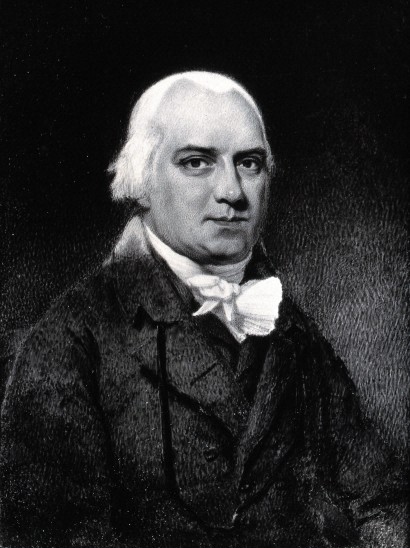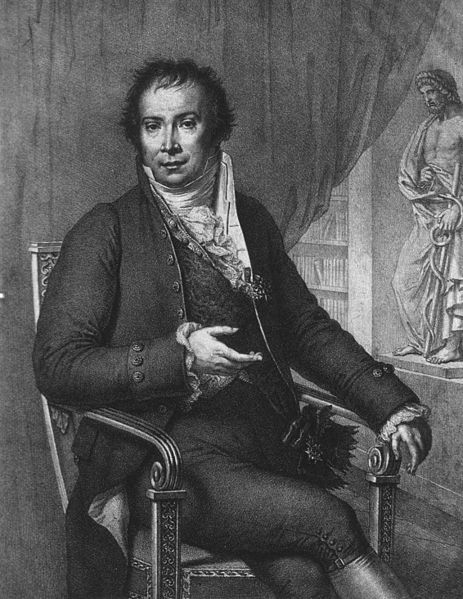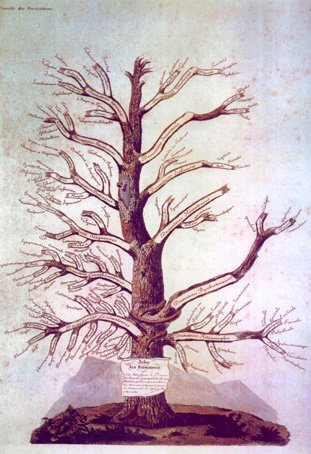<Back to Index>
- Physician Robert Willan, 1757
- Dermatologist Jean - Louis - Marc Alibert, 1768
PAGE SPONSOR

Robert Willan FRS (12 November 1757 near Sedbergh, Yorkshire – 7 April 1812, Madeira) was an English physician and the founder of dermatology as a medical specialty. He received his MD at Edinburgh in 1780 and was elected a Fellow of the Royal Society in 1809. He was educated at Sedbergh School.
From 1781 Willan practiced medicine in Darlington and then moved to London in 1783 as physician to the new Carey Street Public Dispensary, where he remained until 1803 teaching alongside Thomas Bateman. Willan and Bateman working together provided the world's first attempt to classify skin diseases from an anatomical standpoint.
In 1790 Willan received the Fothergill Gold Medal from the Medical Society of London for his classification of skin diseases. In the same year he published an account entitled "A Remarkable Case of Abstinence", which detailed the case of a young Englishman who died in 1786 after fasting for 78 days - one of the earliest accounts of eating disorders in males.
A copy of one of his works was translated into German and published in Breslau in 1799. The English version has been lost.
In 1798 Willan described the occupational disease psoriasis diffusa, which affects the hands and arms of bakers, and in 1799 first described the exanthematous rash of childhood known as erythema infectiosum.
Willan's 1808 book, On Cutaneous Diseases is a
landmark in the history of dermatology and in medical
illustration and contains the first use of the word
"lupus" to describe cutaneous tuberculosis.


Jean - Louis - Marc Alibert (May 2, 1768 – November 4, 1837) was a French dermatologist born in Villefranche - de - Rouergue, Aveyron. He was a pioneer of French dermatology.
Originally planning to enter the priesthood, Alibert did not begin studying medicine until he was 26 years old. As a medical student in Paris, he studied with renowned physicians that included Pierre - Joseph Desault (1744 – 1795), Marie Francois Xavier Bichat (1771 – 1802) and Philippe Pinel (1745 – 1826). In 1801 he was appointed médecin adjoint to the Hôpital Saint - Louis (then known as the Hospice du Nord), where he administered to patients with syphilis, leprosy and other skin disorders. Following the Restoration of the French monarchy, Alibert became a personal physician to Louis XVIII. Later he was a personal physician to Charles X, and was awarded with the title of "baron". Being that there was no chair of dermatology in Paris, Alibert was appointed professor of materia medica and therapeutics in 1823.
Alibert believed that when diagnosing skin disorders several criteria needed to be used, and tried to introduce a classification system for diseases that was similar to the method Bernard and Antoine Laurent de Jussieu used in botany. Alibert first classified dermatological disorders according to outer appearance, then he divided them into what he called families, genera and species. This system of classification was represented pictorially by Alibert as the "Tree of Dermatoses".
Alibert was a prodigious writer, his best known work being the beautifully illustrated Descriptions des maladies de la peau. A type of non-Hodgkin lymphoma, known as mycosis fungoides was formerly known as "Alibert - Bazin syndrome", and barber's itch was once referred to as "Alibert's mentagra".
In 1806, he was the first to describe a patient with mycosis fungoides.